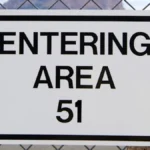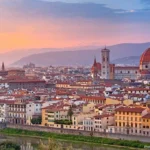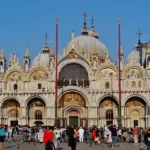
Hey there, history buffs and travel enthusiasts! Buckle up, because we’re diving deep into the fascinating world of Salt Lake City. Forget what you think you know – this vibrant city holds a treasure trove of surprising stories and quirky secrets. From pioneering feats to unexpected claims to fame, get ready to discover 25 incredible facts that will make you see Salt Lake City in a whole new light!
Salt Lake City, founded on July 24, 1847, holds a significant place in American history as it was established by Mormon pioneers led by Brigham Young. The city’s roots in religious history are evident in its development and culture. It serves as the capital of Utah and is known for its stunning natural surroundings and vibrant community. The founding date marks a pivotal moment in the city’s inception, shaping its identity and growth over the years.
Situated at an elevation of approximately 4,330 feet above sea level, Salt Lake City boasts a unique geographical setting that contributes to its climate and landscape. The city’s elevation impacts factors such as weather patterns, outdoor activities, and even the growth of certain plants and trees. Residents and visitors alike experience the effects of this elevation in various aspects of daily life.
The Great Salt Lake, the largest natural lake west of the Mississippi River, is a defining feature of Salt Lake City’s geography. Its vast expanse of saltwater provides habitat for diverse wildlife and offers recreational opportunities for locals and tourists. The lake’s size and saline composition make it a distinctive natural wonder that contributes to the city’s identity and ecosystem.
In 2002, Salt Lake City hosted the Winter Olympics, welcoming over 2,400 athletes from 77 nations to compete in a variety of winter sports. The event showcased the city’s ability to organize and host a major international competition, bringing together athletes and spectators from around the world. The Winter Olympics left a lasting impact on the city’s infrastructure, economy, and global reputation as a capable host for large-scale events.
The construction of the Mormon Temple in Salt Lake City spanned 40 years, culminating in its completion in 1893. This architectural marvel serves as a symbol of faith and dedication for the Mormon community and a landmark for visitors to the city. The temple’s intricate design and historical significance make it a focal point of religious and cultural life in Salt Lake City.
Salt Lake City’s public transportation system, known as TRAX, encompasses over 45 miles of track, providing residents and visitors with convenient and eco-friendly travel options. The extensive network of light rail lines connects various neighborhoods, attractions, and business districts within the city, reducing traffic congestion and promoting sustainable transportation practices. TRAX plays a vital role in enhancing mobility and accessibility for individuals throughout Salt Lake City.
The Utah State Capitol building, constructed between 1912 and 1916, stands as a prominent symbol of government and history in Salt Lake City. Perched atop a hill overlooking the city, the Capitol building houses the offices of state legislators and serves as a hub for political activity and public engagement. Its neoclassical architecture and commanding presence make it a recognizable landmark in the city’s skyline.
Home to the University of Utah, founded in 1850, Salt Lake City boasts a renowned institution of higher learning that has shaped generations of students and scholars. The university’s rich academic legacy, research contributions, and diverse student body contribute to the city’s intellectual and cultural vibrancy. With a wide range of academic programs and extracurricular activities, the University of Utah plays a central role in shaping the educational landscape of Salt Lake City.
The Hogle Zoo in Salt Lake City, established in 1931, provides a haven for over 800 animals from around the world, offering educational experiences and conservation initiatives. The zoo’s commitment to animal welfare, species preservation, and public outreach makes it a beloved destination for families, nature enthusiasts, and wildlife advocates. Through exhibits, programs, and community partnerships, the Hogle Zoo plays a vital role in promoting environmental awareness and wildlife conservation in Salt Lake City.
The Salt Lake Tabernacle, renowned for its unique acoustics, serves as the home of the prestigious Mormon Tabernacle Choir, showcasing the intersection of music, architecture, and faith. The Tabernacle’s distinct oval shape and wooden interior create a space known for its exceptional sound quality and musical performances. As a cultural and religious landmark, the Salt Lake Tabernacle attracts visitors from around the world to experience its acoustical wonders and spiritual significance.
The annual Sundance Film Festival, founded in 1978, has become one of the largest independent film festivals in the United States, attracting filmmakers, industry professionals, and movie enthusiasts from around the world. The festival, held in Park City near Salt Lake City, showcases a diverse selection of independent films, documentaries, and shorts, providing a platform for emerging talent and innovative storytelling. Sundance’s influence on the film industry and its commitment to supporting independent voices have solidified its reputation as a premier destination for cinematic creativity and cultural exchange.
The Kennecott Copper Mine, located southwest of Salt Lake City, stands as one of the largest man-made excavations globally, showcasing the scale of human industry and resource extraction. The mine’s vast operations and massive machinery underscore the impact of mining on the environment and local communities, raising questions about sustainability and responsible resource management. As a significant economic contributor to the region, the Kennecott Copper Mine plays a pivotal role in Utah’s industrial landscape and resource economy.
The Salt Lake City Public Library, designed by architect Moshe Safdie and opened in 2003, features a striking glass and steel structure that has become a modern architectural icon in the city. The library’s innovative design, spacious interior, and sustainable features reflect a commitment to education, community engagement, and cultural enrichment. With its extensive collection, diverse programs, and welcoming spaces, the Salt Lake City Public Library serves as a hub for learning, creativity, and social connection in the heart of the city.
Temple Square in Salt Lake City spans 10 acres and serves as a significant religious and cultural landmark for the Mormon community and visitors alike. The square’s iconic architecture, beautifully landscaped grounds, and historic buildings, including the Salt Lake Temple and Tabernacle, offer a glimpse into the city’s religious heritage and architectural legacy. Millions of tourists visit Temple Square each year to explore its gardens, learn about Mormon history, and experience the spiritual ambiance of this revered site.
The Bonneville Salt Flats, located near Salt Lake City, feature a vast expanse of white, salty terrain that has captivated visitors and speed enthusiasts for decades. The unique landscape of the salt flats provides an ideal setting for land speed racing events, where drivers attempt to break world records and push the limits of automotive performance. The flat, featureless expanse of the Bonneville Salt Flats offers a surreal backdrop for speed trials and reflects the intersection of human ingenuity and natural beauty.
The City and County Building in Salt Lake City, completed in 1894, showcases a striking example of Richardsonian Romanesque architecture, characterized by its robust stone construction and intricate detailing. The building’s grand facade, towers, and arched windows convey a sense of civic pride and historical significance, serving as a symbol of government and public administration in the city. With its ornate design and imposing presence, the City and County Building stands as a testament to Salt Lake City’s architectural heritage and civic identity.
The Utah Museum of Fine Arts, founded in 1951, houses a diverse collection of over 20,000 works of art spanning various periods, styles, and cultures. The museum’s extensive holdings encompass paintings, sculptures, ceramics, textiles, and artifacts from around the world, offering visitors a rich cultural experience and artistic exploration. Through exhibitions, educational programs, and community outreach, the Utah Museum of Fine Arts plays a vital role in promoting visual arts appreciation and cultural understanding in Salt Lake City and beyond.
The Salt Lake City International Airport, opened in 1911, serves as a major transportation hub for air travel in the region, connecting the city to domestic and international destinations. The airport’s modern facilities, efficient operations, and convenient location make it a vital gateway for travelers visiting Salt Lake City and the surrounding area. With its diverse airline services, amenities, and passenger-friendly design, the Salt Lake City International Airport plays a crucial role in facilitating tourism, business travel, and economic growth in the region.
The Days of ’47 Parade in Salt Lake City commemorates the arrival of Mormon pioneers in the Salt Lake Valley, celebrating their perseverance, faith, and contributions to the city’s history. The annual parade, held since the late 19th century, features colorful floats, marching bands, equestrian displays, and community groups, drawing spectators from near and far. Through music, pageantry, and historical reenactments, the Days of ’47 Parade honors the pioneer spirit and cultural heritage that continue to shape Salt Lake City’s identity and traditions.
The Natural History Museum of Utah, located on the University of Utah campus, offers a fascinating exploration of the state’s natural history, geology, and biodiversity. The museum’s exhibits showcase ancient fossils, geological formations, native flora and fauna, and interactive displays that engage visitors of all ages. With its research initiatives, educational programs, and public outreach efforts,
The Salt Lake City Marathon, first held in 2004, has grown into a premier running event attracting thousands of participants from around the world. The marathon course winds through the city’s scenic streets, offering runners a challenging and rewarding experience. With its festive atmosphere, community support, and competitive spirit, the Salt Lake City Marathon has become a highlight on the city’s annual calendar of events.
Red Butte Garden and Arboretum, established in 1985, spans over 100 acres and showcases a diverse collection of plants, flowers, and ecosystems native to the Intermountain West. The garden’s botanical displays, themed gardens, and educational programs provide visitors with a tranquil retreat and an opportunity to learn about sustainable gardening practices and conservation efforts. Red Butte Garden’s commitment to environmental stewardship and horticultural education makes it a valuable resource for nature enthusiasts and garden lovers in Salt Lake City.
The Utah Symphony, founded in 1940, stands as one of the premier symphony orchestras in the western United States, renowned for its world-class performances and musical excellence. The symphony’s rich repertoire, talented musicians, and innovative programming have earned it a loyal following and critical acclaim. Through concerts, educational initiatives, and community outreach, the Utah Symphony enriches the cultural landscape of Salt Lake City and fosters a love of classical music among audiences of all ages.
The Leonardo Museum, opened in 2011, offers a unique blend of science, art, and technology exhibits that inspire creativity, curiosity, and exploration. The museum’s interactive displays, hands-on activities, and multimedia installations engage visitors in a dynamic learning experience that bridges the gap between art and science. With its focus on innovation, discovery, and interdisciplinary thinking, the Leonardo Museum serves as a hub for creativity and intellectual discovery in Salt Lake City.
The annual Utah Arts Festival, held since 1976, showcases a wide range of visual and performing arts from local and national artists, celebrating creativity, diversity, and cultural expression. The festival features art exhibits, live performances, culinary offerings, and interactive activities that engage attendees in a vibrant celebration of the arts. Through its commitment to fostering artistic talent, promoting cultural exchange, and engaging the community, the Utah Arts Festival has become a beloved tradition that enriches the cultural fabric of Salt Lake City.
Salt Lake City FAQs:
General Information:
- Where is Salt Lake City? Salt Lake City is the capital and most populous city in the state of Utah. It’s nestled along the Wasatch Front, a mountain range bordering the eastern edge of the Salt Lake Valley. The Great Salt Lake sits to the west of the city.
- What’s the weather like in Salt Lake City? Salt Lake City experiences four distinct seasons. Summers are warm and dry with low humidity, while winters are cold and snowy. Spring and fall offer pleasant temperatures with beautiful transitions in foliage. Be aware that Salt Lake City sits at a high elevation (around 4,300 feet), so it’s advisable to acclimate if you’re visiting from a lower altitude.
- What’s the population of Salt Lake City? The city itself has a population of around 182,000, but the Salt Lake City metropolitan area boasts over 1.2 million residents.
Culture and Religion:
- Is Salt Lake City a Mormon city? The Church of Jesus Christ of Latter-day Saints (LDS Church), commonly known as Mormons, played a significant role in founding Salt Lake City. Temple Square, a central landmark, is the headquarters of the LDS Church. However, Salt Lake City is a diverse and welcoming city with a growing non-Mormon population.
- What are some things to do in Salt Lake City? Salt Lake City offers a surprising variety of activities. Visitors can explore Temple Square, delve into local history at museums, or attend a concert or Broadway show in the lively downtown area. Outdoor enthusiasts can hike or bike in the Wasatch Mountains, or head to nearby ski resorts for world-class winter sports. Salt Lake City also boasts a vibrant culinary scene, with everything from traditional Mormon fare to international cuisine.
Logistics:
- What time zone is Salt Lake City in? Salt Lake City is in the Mountain Time Zone (MT) and observes Daylight Saving Time.
- How do I get around Salt Lake City? Salt Lake City has a public transportation system with buses and light rail lines (TRAX). Renting a car is a popular option for exploring the surrounding area, including national parks. For shorter distances, rideshare services like Uber and Lyft are readily available.
- Is Salt Lake City an international airport? Yes, Salt Lake City International Airport (SLC) offers a variety of domestic and international flights.
Additional Salt Lake City Facts:
- Great Salt Lake: This unique natural wonder boasts incredibly buoyant saltwater, making it a popular spot for floating. Be aware that the salinity levels can irritate the skin and eyes.
- Skiing: Salt Lake City is a fantastic hub for skiers and snowboarders. World-renowned resorts like Park City Mountain and Alta are just a short drive away.
- Family-Friendly: Salt Lake City offers a variety of attractions and activities perfect for families, including the Hogle Zoo, This is the Place Heritage State Park, and Discovery Gateway children’s museum.
These are just some of the most frequently asked questions about Salt Lake City. For even more detailed information, you can consult the official Salt Lake tourism website https://www.visitsaltlake.com/.









